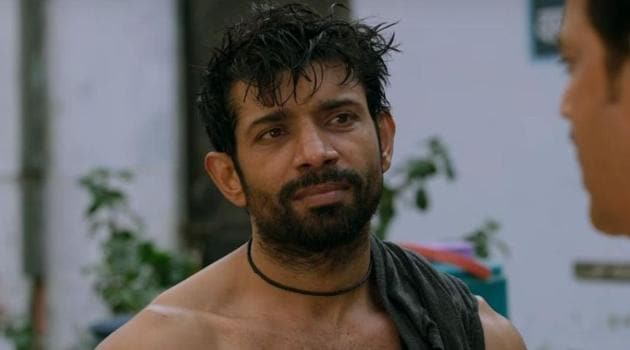Mukkabaaz and Anurag Kashyap’s caste politics
In small-town Uttar Pradesh or Haryana, caste is all-important. It decides what you can and, more importantly, can’t do. And that is why Anurag Kashyap’s Mukkabaaz is important, almost path-breaking.
Love stories in Bollywood follow a set pattern -- two people meet each other, face familial opposition and then come together after overcoming all differences. Their differences are based on class, rarely caste. For Hindi film industry operates in an equal opportunity world where the second name is inconsequential. You remember the Rajs and Rahuls, Kyras and but nobody asks Rahul who?

This is not how India operates. In small-town Uttar Pradesh or Haryana, where Hindi films have slowly but surely shifted their gaze, caste is all-important. It decides what you can and, more importantly, can’t do.
And that is why Anurag Kashyap’s Mukkabaaz is important, almost path-breaking. He not only puts caste divisions out in the open, he also addresses the hot-button topics in India most are afraid to even discuss. So, we get cow vigilantism, mob lynchings, forced and misplaced nationalism to power play in various institutions -- all signalling to the rot in the system.
In the post-Padmavati world, how did he manage to do it all without protests and bans? By placing them firmly in the milieu of small towns of Uttar Pradesh. It was a risk that paid off given the film did release in theatres. Had Mukkabaaz not been as subtle and understated about the politics of the film, perhaps it was have even missed out on the Rs 5cr it managed to earn in four days.
Touted as a boxing film, Mukkabaaz is the love story of people from different castes. The narrative is restricted to caste divisions.Though the main story is a fight between people from two ‘upper castes’, Anurag manages to slip in all the other caste divisions existent in our society. So, we see a Yadav boss, rejoicing in the fact that a ‘Thakur’ is working as his peon even as he remembers that his dad worked as a servant in a Bhumihar household. The film’s villain, Bhagwan Das Mishra, is a Brahmin while the protagonist is Shravan Kumar - he could be a Rajput or a Bhumihar as people from both castes are addressed as Thakur in the region. Jimmy Shergill’s Mishra evens draws attention to the confusion over Shravan’s cast, in case you missed it in the surname.
Unlike most Bollywood films, characters of Mukkabaaz are defined by their surnames - a rarity in our films.
Another remarkable thing in the film is that it throws light upon reverse casteism - if the upper caste has oppressed certain sections over a period of time, people from the ‘lower castes’ who have managed to improve their financials despite the caste barriers feel it is their duty to avenge their forefathers. Either ways, caste remains ingrained in our mindset even 70 years after Independence.
While Mukkabaaz is not a film that will bring about a change in the society, it certainly is one small step towards a society where a dialogue on our social issues can be started where it should be - our homes and not just the TV news debates.
Interact with the author @swetakaushal
Follow @htshowbiz for more
Get more updates from Bollywood, Taylor Swift, Hollywood, Music and Web Series along with Latest Entertainment News at Hindustan Times.
Get more updates from Bollywood, Taylor Swift, Hollywood, Music and Web Series along with Latest Entertainment News at Hindustan Times.





